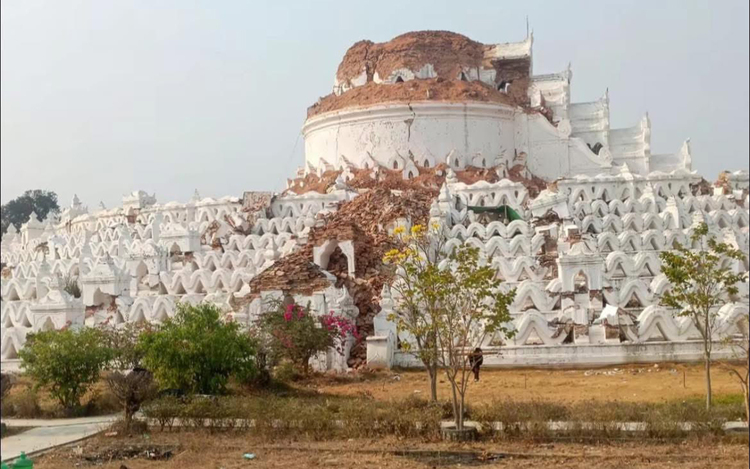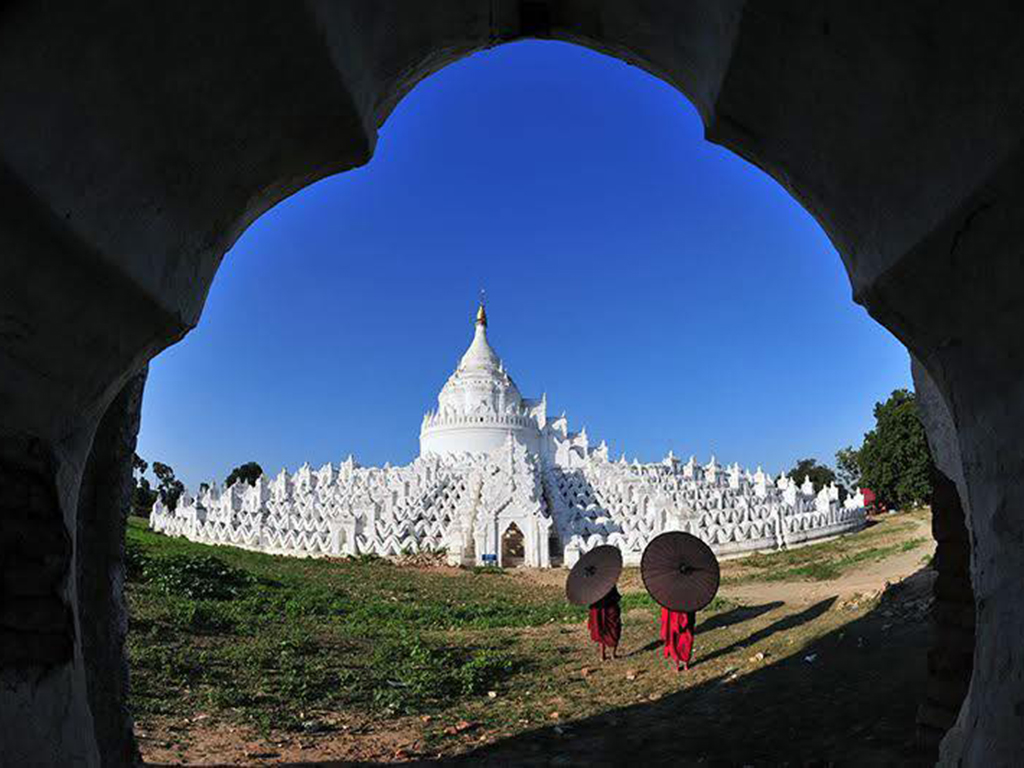
Hsinbyume Pagoda, also known as Myatheindan Pagoda, is located north of Mingun in the Sagaing region of Myanmar, about 10 kilometers northwest of Mandalay. The pagoda is painted white and modeled after the sacred mountain of Buddhism. It is one of the most famous pagodas in Myanmar and is an iconic landmark of Mandalay, the country’s second-largest city, along with the Ubein wooden bridge.

The pagoda features seven concentric terraces, representing the seven mountains surrounding Mount Meru, the mythical mountain considered the center of the universe in Buddhism. The undulating lines of the pagoda are described by local guides as the bodies of hundreds of dragons.
The pagoda stands as a testament to the love story between Prince Bagydaw and his wife, Hsinbyume. Unfortunately, Hsinbyume passed away while giving birth to their child. Overcome with grief, Prince Bagydaw built the Hsinbyume Pagoda in 1816 to honor his late wife. In 1836, the pagoda was severely damaged by an earthquake, and it was restored in 1874 under the orders of King Mindon.
On social media platforms like Instagram and TikTok, various pages and communities have shared images of the pagoda with captions such as “Myanmar’s iconic white pagoda damaged” and “The splendid Hsinbyume in Myanmar, a symbol of cultural heritage, destroyed in the earthquake.”
Le Thi Huong Giang, a photographer based in Hanoi, Vietnam, visited Myanmar in 2014 and toured the pagoda. She was introduced to this site by a local tour guide and photographer. According to Ms. Giang, the pagoda is a popular destination for both tourists and locals.
“The pagoda has a unique architecture, unlike the statue-filled temples of Bagan. I was very impressed and took many photos there. Seeing the photos of the collapsed pagoda is heartbreaking,” shared Ms. Giang.



Ms. Giang added that she has only been able to get in touch with one friend in Myanmar following the March 28 earthquake, and others have not responded yet. Her friend shared that the situation is dire, with overcrowded hospitals, power and water outages, and a lack of internet access.



































